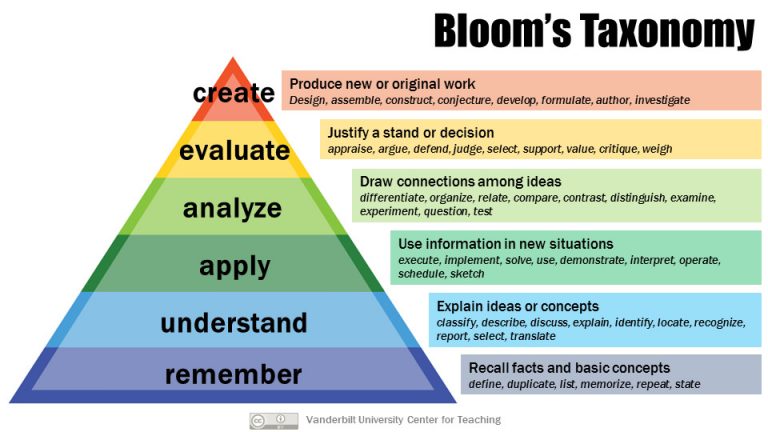The TBIL Resource Library
A key outcome of the Team-Based Inquiry Learning NSF project is our TBIL Resource Library hosted at TBIL.org.
- Includes resources for Calculus and Linear Algebra.
- Through initial volunteer efforts, and later supplemental suppport from NSF, Precalculus is in the works!
Backwards Design
Ideally, TBIL Resource Library courses are developed using backwards design.
Backwards design is a course development philsophy based upon first identifying desired results, determining how to gather evidence of learning, and finally designing activites to prepare students to demonstrate that evidence.
Activity!
Order the following steps in order to implement backwards design for a Team-Based Inquiry Learning module.
- Create fluency builder 4-S activities to prepare students for success on assessments.
- Design scaffolded exploration and flexible extension 4-S activities to build up understanding and connect outcomes together.
- Determine how to assess each learning outcome, by designing appropriate exercises.
- Identify the learning outcomes for a course (or module for a course).
- Identify pre-readings and videos to help students prepare for the module.
- Identify learning incomes that students must be comfortable with to engage in class activities.
- Write a readiness check quiz to be completed at the beginning of the module.
TBIL Resource Library Backwards Design
- Identify the learning outcomes for a course (or module for a course).
- Determine how to assess each learning outcome, by designing appropriate exercises.
- Create fluency builder 4-S activities to prepare students for success on assessments.
- Design scaffolded exploration and flexible extension 4-S activities to build up understanding and connect outcomes together.
- Identify learning incomes that students must be comfortable with to engage in class activities.
- Write a readiness check quiz to be completed at the beginning of the module.
- Identify pre-readings and videos to help students prepare for the module.
Activity!
Which of these is not prescribed by TB(I)L pedagogy?
A. Learning outcomes and assessments.
B. Scaffolded exploration, Fluency builders, and flexible extension.
C. The 4-Ss for in-class activities.
D. The readiness assurance process
Activity!
What considerations should be made when selecting learning outcomes and developing appropriate assessments?
Each group should list 2 or 3 ideas.
One helpful framework: Bloom’s Taxonomy

Each outcome is generally a predicate finishing “At the end of the semester, each student should be able to…”. The verbs in this taxonomy can help inspire these predicates (and help encourage a breadth of skills beyond the lower levels).
Another helpful framework: S.M.A.R.T.
I consider each letter when designing both outcomes and assessments.
- Specific: Minimize ambiguity and tell students what you’re looking for!
- Measurable: Ensure your questions illicit responses that can be used to measure the outcome at hand.
- Attainable: Outcomes and assessments should be of appropriate depth/difficulty for students in the course.
- Relevant: Outcomes should be relevant to the course, and exercises should be related to the outcome.
- Timely: Outcomes should be scaffolded in an appropriate order so as to lead to one another.
Activity!
Following are a list of technologies that we’ve chosen to incorporate into the TBIL Resource Library. Discuss them in your team and identify a benefit and a shortcoming for each.
- PreTeXt XML vocabulary for our activity books
- CheckIt randomized exercise generator for assessments
- SageMath programming language for randomized exercises and image generation
- GitHub for asynchronous discussion forums / issues, and collaborating on digital content
- Slack for synchronous community chats and communications.
Sociotechnical Infrastructure
The interconnections between these various technologies and our community members form our sociotechnical infrastructure.
- Communities can build more through appropriate leveraging of technologies.
- Technologies are useless without the people to wield them for good.
Our infrastructure is largely open-source, which means (very roughly) that we use free tools to create free content for the benefit of society at large.
Transitioning to an Open-Source Ecosystem
